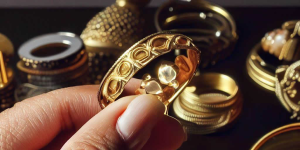When it comes to jewelry, many people are drawn to the allure of shiny, new pieces straight from the store. However, the world of second – hand jewelry offers a treasure trove of unique, high – quality, and often more affordable options. Whether you’re looking to add a vintage touch to your collection or simply want to make a smart purchase, understanding the logic behind choosing second – hand jewelry is essential. In this article, we’ll delve into the key aspects to consider when selecting pre – owned gems.
The first and foremost factor in picking second – hand jewelry is assessing its condition. This involves a thorough examination of the piece for any signs of damage, wear, or defects. Look closely at the metal for scratches, dents, or discoloration. For gemstones, check for chips, cracks, or cloudiness. A well – maintained piece with minimal damage is more likely to retain its value and beauty. However, even jewelry with some signs of wear can be a good buy if the damage is repairable and the overall quality is high.
Evaluating the Quality of Materials
The materials used in jewelry play a crucial role in determining its value and durability. In second – hand jewelry, it’s important to verify the authenticity and quality of the metals and gemstones. For gold, check for hallmarks or stamps that indicate its purity. Platinum and silver also have specific markings. When it comes to gemstones, consider their cut, clarity, color, and carat weight. A high – quality gemstone with a good cut and high clarity can significantly increase the value of the jewelry. Don’t hesitate to consult with a professional jeweler or gemologist if you’re unsure about the materials.

